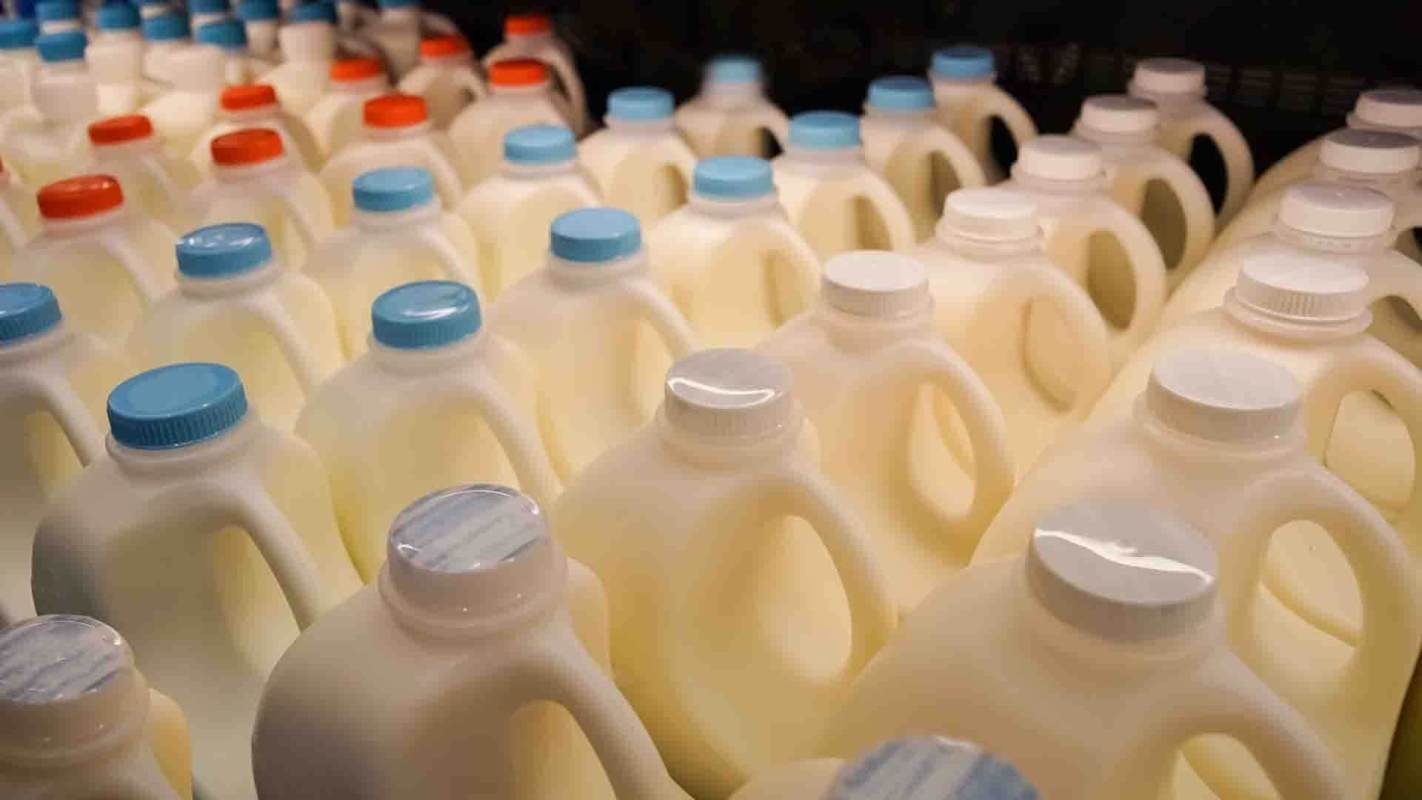For most of us, small, individual milk cartons are a familiar school lunch staple. But they're also a major source of food waste.
A recent study by the World Wildlife Fund identified milk cartons as one of the lunch items that's thrown away most often. The study pointed to an alternative — bulk milk dispensers — as a solution.
What is a bulk milk dispenser?
Bulk milk dispensers, or BMDs, are large refrigerated containers with multiple spigots.
Cafeteria workers can load bags of milk inside these machines where it's then dispensed into students' cups. This gives children control over how much milk they receive.
Why are BMDs a better alternative?
The WWF study found that when students can choose how much milk to take, they throw away much less than when they're simply given a full carton.
And by combining BMDs with reusable cups, schools can ensure that they use much less packaging — just a few large bags instead of hundreds of individual cartons. This significantly reduces the amount of trash a school produces each day, which cuts back on waste sent to landfills.
The arrangement has another, secondary effect on the school's production needs, too. BMDs reduce the amount of milk a school needs in total, which lowers its demand for dairy products. Since each gallon of milk takes 144.2 gallons of water to create and produces 17.6 pounds of heat-trapping gas, reducing a school's milk order can make a big impact on our planet. And of course, it also takes huge amounts of fuel to ship the milk to schools and carry the garbage away.
The WWF is clear about the benefits of BMDs.
"It's estimated that 45 million gallons of milk are wasted each school year, which comes out to roughly 32 cartons per student every year. Comparatively, milk waste from BMDs is much lower at roughly 4.5 cartons per student," the study states. "While this impact may at first appear small, with 49.5 million students attending K-12 schools in the US, this would be the same as taking over 145,000 gas-powered vehicles off the road each year."
"Students prefer the flexibility to serve themselves only what they need, which helps to reduce waste and increase overall consumption of a key and nutritious staple of the [National School Lunch Program] — at a time of growing food insecurity," the report added.
It estimates that switching to BMDs will cost the average elementary school $12,000 upfront — a price that will be recovered within a few years due to savings on milk and refrigeration.
Want more? Follow The Cool Down on Instagram and join our Weekly Newsletter for cool stories and easy tips that save you money, time, and our planet.








